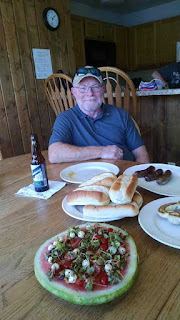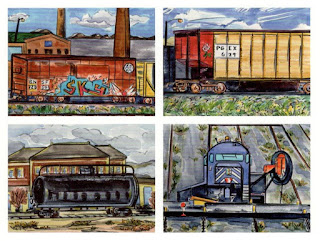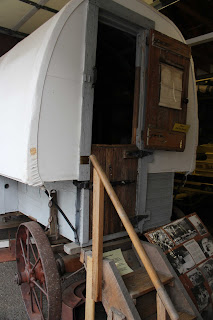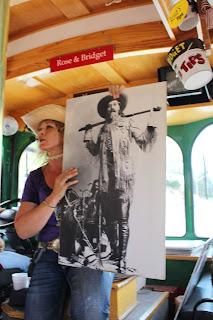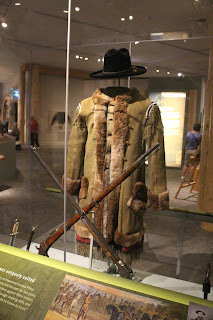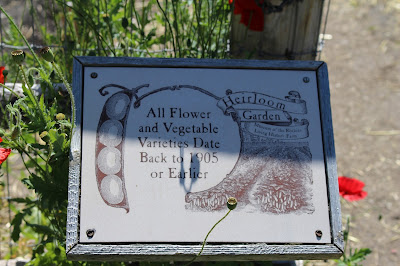At the beginning of all future blog posts we will post our schedule - just click on the RV Adventure Schedule tab above (or enlarge the Google map located in the sidebar on the right and click on the markers). If you will be in our area during your travels, please contact us. We would enjoy spending time with you!
Sharon found a great RV Park on Highway 89 in Livingston, Montana, just north of the town of Gardiner, the original entrance to Yellowstone National Park. It’s the only entrance that allows access all year round. Yellowstone’s Edge RV Park was a small park along the Yellowstone River. A friendly young couple, Chan and Pam, own the park, live on site and were very helpful suggesting things to do and see in the area. We stayed here for the entire month of July.
Sharon found a great RV Park on Highway 89 in Livingston, Montana, just north of the town of Gardiner, the original entrance to Yellowstone National Park. It’s the only entrance that allows access all year round. Yellowstone’s Edge RV Park was a small park along the Yellowstone River. A friendly young couple, Chan and Pam, own the park, live on site and were very helpful suggesting things to do and see in the area. We stayed here for the entire month of July.
Established in
1880, Gardiner is located in the heart of Yellowstone’s Northern Range and is
surrounded by the Absaroka-Beartooth Wilderness to the east, the Gallatin
Wilderness to the north and west, and the world’s first and most famous
national park, Yellowstone National Park, to the south. The Roosevelt Arch,
inscribed “For the benefit and enjoyment of the people” has marked the park
entrance road in Gardiner since 1903. President Teddy Roosevelt delivered the
dedication speech for the arch to an estimated 5,000 people.
4th
of July with Friends from Sarasota
Our friends, Kenny
and Gail from Sarasota, Florida and Gail’s sister, Gette, from Wisconsin were
vacationing in Estes Park, Colorado and Big Sky, Montana during the
summer. Kenny and Mike went to high
school together in Venice, Florida. Sharon and Gail were friends in Wisconsin.
Gail had moved to Florida in the 1970’s and met Kenny. Gail talked Sharon into
moving to Florida in 1975. Then Kenny and Gail introduced Sharon to Mike and the
rest is history!
We spent time with them over the 4th of July holiday in Big Sky, Montana the gateway to the West Entrance to Yellowstone National Park. They were staying in a beautiful time share off U.S. Highway 191 in the Gallatin Canyon. The scenic drive along the Gallatin River and Gallatin National Forest was breathtaking with mountain ranges towering above 7,000 feet.
We enjoyed the 4th of July at their place as we shared stories from our 40+ year friendship over Moose Drool and Huckleberry beer! Kenny grilled out sausage and bratwurst. Gail and Gette made a delicious watermelon pizza and salad, and Sharon made brownies frosted with buttercream frosting. We had a view of the lake and a “local” fox visited just outside our porch.
We headed out for dinner at rustic place called the 320 Ranch Steakhouse with great service and food. There was a lot to choose from on the menu, and we couldn’t pass up on dessert! Following dinner we returned to West Yellowstone and we spent the night in a quaint log cabin room at the Moose Creek Inn. Kenny, Gail and Gette spent the night at the Three Bear Lodge in town.
We got up early and ate a healthy breakfast at the Three Bear Restaurant. We spent the day in Yellowstone, much different than our earlier visit in June. The visitors increased by 20 times and the traffic and parking were horrendous, but we still enjoyed the views, the wildlife and spending time with our friends!
We ended the day
touring the Grizzly & Wolf Discovery Center, a not-for-profit wildlife park
and educational facility in the town of West Yellowstone. The center showcased
live grizzly bears and gray wolves in spacious, natural outdoor habitats. It
also featured several raptors that can no longer survive in the wild. The animal
keepers helped a group of young kids hide the food so the bears would have to
search for it. The bear feeding was very interesting to watch as the grizzly
bears and crows competed for food! We also
observed three live wolf packs and even got to hear them howl and socialize
with members of their pack! It was a memorable experience.
Before parting ways, we all had dinner at a great little pizza place. It was so much fun seeing Kenny, Gail and Gette. We look forward to meeting them again sometime during our travels.
Mammoth
Hot Springs
The only place we
had not seen yet in Yellowstone was the Mammoth Hot Springs. On our way we spotted some wildlife.
For hundreds of years, Shoshone and Bannock people collected minerals from Mammoth Hot Springs to make white paint. These minerals contribute to the beautiful terrace structures, along with heat, a natural “plumbing” system, water, and limestone.
Liberty Cap is 37-feet high and was created by a hot spring that was active in one location for a long time. Its internal pressure was sufficient to raise the water a great height, allowing mineral deposits to build slowly and continuously for hundreds of years. Liberty Cap was named in 1871 by the Hayden Survey because it resembled the peaked knit caps symbolizing freedom and liberty during the French Revolution.
Fly Fishing on the Yellowstone River
Grizzly bears are
not the only ones who like to fish for trout! For anglers, the Yellowstone
River is a blue-ribbon trout stream, so Mike wanted to catch some trout!
Chan and Pam recommended getting a guide through Angler’s West Fly Fishing in Paradise Valley, located in the heart of Montana’s world renowned fly fishing, just south of the RV Park. Mike wasn’t surprised that it was one of the finest fly fishing stores anywhere so he decided to sign up for a half-day trip, and Sharon would tag along as his photographer!
Chan and Pam recommended getting a guide through Angler’s West Fly Fishing in Paradise Valley, located in the heart of Montana’s world renowned fly fishing, just south of the RV Park. Mike wasn’t surprised that it was one of the finest fly fishing stores anywhere so he decided to sign up for a half-day trip, and Sharon would tag along as his photographer!
The morning we met our guide, Max, it was overcast and drizzling, but that never stopped a fisherman! Max was a young, cute kid, originally from Austin, Texas. He now lived in nearby Bozeman. He went to college and got a degree in Geology, but here he was doing what he loved, fishing on the Yellowstone River! After loading up his boat, we headed to the launch area where he would help Mike practice casting the fly rod.
Once on the river, our adventure began, hoping to land a Rainbow Trout, Brown Trout or Yellowstone Cutthroat. In the beginning, Mike continued to practice his casting and as the day went on he got better and was successful in landing some trout! State regulations require catch and release, a program Mike strongly supports! Sharon documented every cast and trout that Mike so proudly caught!

Along the way, we enjoyed the gorgeous scenery and Max even picked up an agate from the Yellowstone River which Sharon later had cut and cabbed into a stone that she would use to design a ring or pendant.
Time to call it a day! Mike still had a big smile on his face! He enjoyed his day so much that he purchased a fly fishing rod and reel for his next fishing adventure!
Lamar Valley & Beartooth Pass
Somewhere along
our adventure last year, we stopped at an overlook and met some people who were
from Montana. They said if we ever got to Montana, we have to take the Scenic
drive across Beartooth Pass. So here we were! We woke up before dawn in hopes
of seeing wildlife along our drive to Lamar Valley and the scenic Beartooth
Pass byway. On the way into Yellowstone we spotted some Big Horn Sheep high up in the rocks.
Yellowstone’s Northern Range is home to one of the largest and most diverse populations of large mammals on Earth. The Northern Range is a grassland and sagebrush habitat surrounding the Yellowstone River and its tributaries in the northern portion of the park. The Northern Range supports dense populations of large mammals year-round. We were especially hoping to see a glimpse of a wolf, coyote and bears which we were more likely to see in the less populated Northern Range.
As we continued we side-tracked south at Tower Junction on a road that climbs toward Mount Washburn (10,243 feet) and Dunraven Pass (8,859 feet). On the way we stopped to see the 132 foot Tower Fall spotted a herd of Elk crossing a river.
As we drove to the top of Mount Washburn we stopped for spectacular vistas across Antelope Valley to the Absaroka Mountains in the distance. When we reached the top, it was cold and windy. We stopped to observe some marmots hiding in the grassy landscape. At the elevations on the flanks of Mount Washburn (8,000 feet and higher), black and grizzly bears live in search of whitebark pine nuts. Wildflowers were in bloom and carpeted the meadows below Mount Washburn. The slopes of Mount Washburn also host bighorn sheep and pica.
We double-backed to get on the main road that would take us east to Lamar Valley where bison roamed. We also searched for wolves, grizzly and black bears, pronghorn, coyotes, foxes, elk and raptors such as bald and golden eagles, ospreys, and prairie falcons.
We would now travel on U.S. Highway 212 that would take us across the beautiful Beartooth Mountains as we climb the many switchbacks to 10,947-foot Beartooth Pass. This scenic byway travels through portions of Custer and Gallatin National Forests in Montana and Shoshone National Forest in Wyoming. Legendary for its beauty and history, this 68-mile scenic drive is the highest elevation road in the Northern Rockies to Beartooth Pass. The forests consist of Engelmann spruce, Douglas fir, lodgepole pine, and aspen. It was much colder up here with snow!
We stopped for lunch in Cooke City, Montana, a small town full of rustic Old West atmosphere. Historic Cook City was born more than a century ago in the midst of the Western gold rush, when miners searched for instant wealth in the mountains and streams of the Absaroka and Beartooth Mountain ranges.
The Beartooth scenic byway took us out into Billings, Montana where we hopped on the interstate and headed back to Livingston.
LIVINGSTON,
MT
Located between
the Gallatin Range and the Crazy Mountains, the town of Livingston is nestled
along the free-flowing Yellowstone River. Main Street and the historic
districts are reminders of the town’s bygone golden era. Livingston was founded
by the Northern Pacific railroad in 1882. The downtown buildings from the 1800s
and 90’s still stand as a testimony of the Old West and give Livingston its
special turn-of-the-19th-century charm.
Livingston Depot
The historic
Livingston Depot sits in the heart of town. It was built in 1902 as the
Northern Pacific Railroad’s original access to Yellowstone National Park. Its
majestic colonnade and ornate architectural detail greeted travelers until
1979, when AMTRAK suspended passenger service to southern Montana. It was later
restored and opened in 1987 as a museum. “Rails Across the Rockies: A Century
of People and Places,” along with other exhibits tells the story of the
building of the rails and Montana’s colorful history.
This year the museum exhibited colorful paintings by Livingston artists Sheila Hrasky and Tandy Miles Riddle depicting everyday life and activity through a different set of artistic eyes.
Upstairs was a motion picture exhibit. A number of personalities came to Livingston in the 1970s, including Warren Oates and director Sam Peckinpah who occupied a suite at the top of the nearby Murray Hotel. Warren Oates, who lived in Paradise Valley, was an American character of the 1960s and 1970s whose distinctive style and intensity brought him complex leading roles. Oates was a favorite actor and good friend of Peckinpah's. Warren appeared in many films including "Ride the High Country," "The Wild Bunch," "Dillinger," and "The Border."
Montana novelist/screenwriter, Thomas McGuane's first directing effort was "92 in the Shade." Set and filmed in the Florida Keys, Peter Fonda plays a man living off his grandfather's wealth. His decision to become a fishing guide puts him in competition with Warren Oates and Harry Dean Stanton. The film also stars Margo Kidder. After "92 in the Shade," several of these actors moved to the Livingston area.
In 1997, Livingston resident Patrick Markey and Robert Redford collaborated here once again for the filming of "The Horse Whisperer." Redford directed and starred opposite Kristin Scott Thomas in the film based on the best selling novel by Nicholas Evans.
Dennis Quaid not only starred in the contemporary western "Everything That Rises," he also directed the TNT production. Both Quaid, and co-star Harve Presnell ("Fargo," "Saving Private Ryan," and "Bagger Vance") maintain residences in nearby Paradise Valley. Cameras rolled during Livingston's 1997 4th of July parade, and the film's climatic scenes were shot at the Livingston Fairgrounds.
We also took time to see the scale model trains and tracks maintained by the Livingston Model Railroaders club, located downstairs at the Depot. The club display included a model of the old 50-mile track from Livingston to Gardiner, located at Yellowstone National Park’s North Entrance.
We explored the
Yellowstone Gateway Museum to experience the history of the area. The museum
featured exhibits of native cultures, expeditions, pioneers and transportation,
a research center that included a library, historic photographs and archives,
and a courtyard with a caboose, one-room schoolhouse, blacksmith shop, fire
engines, sheep wagon, and Yellowstone Park Tally-ho Stagecoach.
This dugout canoe was made by
William Clark's (of Lewis & Clark) Great Granddaughter, Mary.
One day we
attended the Festival of the Arts, a highly popular event that features about
100 skilled artists and crafts people. We stopped to talk with artist, Craig
Krzycki. He creates art by using antler he collects every spring during the
annual shedding of Elk and Deer antler. Sharon purchased a deer antler that she
would later cut and use to create jewelry. She also got an antler button and
antler and turquoise earrings.
Craig was an
interesting person to talk to. His lives in a cabin with his dog named Goose.
Craig creates unique antler art on the banks of the Gallatin River in Big Sky,
Montana. Each and every piece is hand crafted using a variety of hand tools,
bringing out the hidden beauty that lies within. Take a look at his website at www.madeinbigsky.com/craig-krzycki/.
Farmer’s Market
Today we went to
the Livingston Farmers’ Market at the Sacajawea Park. We ate some delicious
Brisket sandwiches while listening to a couple of musicians playing music in
the band shell. Before we left we purchased huckleberry syrup, one of our
favorites, and also purchased some more brisket to take home and freeze to
enjoy on another day!
Kayaking
on Dailey Lake
The fly fishing
outfit suggested we kayak on Dailey Lake and they gave us some obscure
directions that led us on different routes that eventually took us to the lake!
By the time we arrived, the lake was already filled with fisherman - a good
sign! It was rather windy, but we launched our kayaks and made our way around the
lake. Although Mike didn’t catch any fish that day, it was nice to wet our
paddles and enjoy the view of the surrounding mountains.
CODY, MT
Cody was a three
hour drive from Livingston, but it was a worthwhile drive through Yellowstone
to Cody, the east entrance to Yellowstone. William F. “Buffalo Bill” Cody
helped found the town of Cody in 1895, and established his TE Ranch south of
town. Buffalo Bill was probably the best-known American in the world during his
lifetime. Having been involved in many events that shaped the American West, he
formed an arena show of the Western experience – Buffalo Bill’s Wild West – in
1883. This world famous show toured the United States and Europe for 30 years.
Sharon photographed the wildlife that we saw along the way. It was a morning with fog that blanketed the beautiful landscape.
Cody’s historic downtown bustles with horse drawn carriages, a trolley and unique restaurants, shops and galleries. We took the trolley tour around town. It was an entertaining one hour, 22-mile tour that spotlighted historical sites, infamous characters, scenic vistas, geology, and old and new west attractions around Cody.
We ate lunch at The Irma Hotel which is listed on the National Register of Historic Places. See the now and then photos below. In 1902, Buffalo Bill built the original part of the Irma Hotel which was called, “just the swellest hotel that every was.” The Irma’s famous original Cherrywood bar was given to Buffalo Bill by Queen Victoria and is one of the most photographed features in Cody. Cody maintained two suites and an office at the hotel for his personal use. When the Burlington Railroad completed a spur line into Cody, his plan was to have travelers stay on their way to the east gate of Yellowstone National Park.
Cody is home to the largest history and art museum in the West: the Buffalo Bill Historical Center, which includes the Whitney Gallery of Western Art, the Plains Indian Museum, the Cody Firearms Museum, the Buffalo Bill Museum and the Draper Museum of Natural History. The museum is often referred to as the “Smithsonian of the West.”
BOZEMAN,
MT
Bozeman is one of
the most diverse small towns in the Rocky Mountain West with an eclectic mix of
ranchers, artists, professors, ski enthusiasts and entrepreneurs drawn here by
world-class, year-round outdoor recreation, Montana State University and a
slice of old-fashioned Americana.
We ate lunch at Ted’s Montana Grill, an American restaurant chain specializing in bison. The company was founded by media mogul and bison rancher Ted Turner. The Bison were nearly extinct 200 years ago, but increased awareness and sustainability programs have brought Bison back to the plains, and enjoying a meal at Ted’s help guarantee that the right resources will keep the herds thriving. The Bozeman location was opened at the Baxter Hotel in 2008.
We ate lunch at Ted’s Montana Grill, an American restaurant chain specializing in bison. The company was founded by media mogul and bison rancher Ted Turner. The Bison were nearly extinct 200 years ago, but increased awareness and sustainability programs have brought Bison back to the plains, and enjoying a meal at Ted’s help guarantee that the right resources will keep the herds thriving. The Bozeman location was opened at the Baxter Hotel in 2008.
We didn’t have a chance to go rock-hounding in Montana, so we settled for Earth’s Treasures, a local rock shop in Bozeman. Montana designated the Montana agate (or Moss agate) and sapphire as its two official state gemstones in 1969.
Museum of the Rockies
While in Bozeman,
we took time to visit The Museum of the Rockies at the Montana State
University. It is recognized as one of the finest research and history museums
in the world. Known for its extensive collection of dinosaur fossils and its
permanent regional history exhibits.
We also visited
the Gallatin History Museum listed on the National Register of Historical
Places. The museum offered a unique glimpse into the area’s past. In addition
to jail cells and a hanging gallows, the museum maintains displays illustrating
the unique histories of a variety of people who have called Southwest Montana
home. Permanent exhibits include Native American history in the Gallatin
Valley, a model of old Fort Ellis, the infamous Big Horn Gun, and a
reconstructed log cabin that stands beside Bozeman’s first steam-powered fire
engine and a 30+ piece gun collection.
BILLINGS,
MT
Western Heritage Center
One day we went to
explore Billings, Montana, a couple hours northeast of Livingston. The Western
Heritage Center represented a regional history of the Yellowstone River Valley. It is listed on the National Register of
Historic Places and was built in 1901 as the Parmly Billings Library.
An interesting
exhibit called “Speaking of Immigration: Voices of a Modern Migration” was a
year-long project by high school students to learn about video production,
interviewing techniques, exhibit building, and research skills.
Next store to the
Western Heritage Center was the J.K. Ralston Studio Cabin complete with the
artist’s furniture, books and painting easel. J. K. Ralston was a skilled
painter of the old west and a treasured friend of many Billings natives. His
cabin home and art studio were one and the same.
We also enjoyed a
stop at the Yellowstone Art Museum.
Our visit wouldn’t
be complete without seeing the Yellowstone County Museum which was founded in
1953. The log cabin holds a fascinating collection of artifacts specific to the
region from prehistory through the fur trade era and post reservation period as
well as an extensive photograph collection. Paul McCormick built the cabin in
1893 which was moved to its current location in 1954 to serve as the
Yellowstone County Museum.
The Pictograph
Cave site was designated as a National Historic Landmark in 1964, because of
its historic and archeological significance. A three-quarter mile interpretive
trail leads to Pictograph, Middle and Ghost Caves and loops back to the visitor
center.
Prehistoric hunters who camped in the cave left behind artifacts and over 100 pictographs or rock paintings. The earliest artists decorated the walls of the cave with enduring black and white pigments.
Images of rifles, horses and animals were painted with red pigment which is derived from a mineral called hematite which is a concentrated iron ore. A paint applicator that still had the red pigment on it was found in the cave and radio carbon dated as used between 1480 and 1650 A.D. The oldest rock art in the cave is over 2,000 years old; the most recent additions are estimated to be 200 to 500 years old.
Chance Meeting with a Black Bear
On our drive out
of the park Sharon noticed a black bear along the road in the meadow below. We
were later told that it was unusual to see a bear in this part of Montana.
Sharon started photographing the bear until it disappeared. Mike walked along
the road to see if he could spot it, but Sharon soon spotted it again and it
was coming closer to her so she motioned to Mike to hurry back into the car!
Sharon quickly got into the car and left the passenger door open for Mike to
jump in! However, Mike grabbed the camera and tripod and proceeded to capture
more photos of the bear which was now wandering away from us.
Meanwhile a couple also spotted the bear so they stopped. The woman dropped off her husband to take photos and she drove off! We were so surprised that she would leave her husband alone with no escape should the bear decide to eat him for lunch! He didn’t speak English, so he was on his own as we drove away!
Zoo Montana
Our last stop in
Billings was Zoo Montana. It was quite a hike through the natural habitat.
VIRGINIA
CITY, MT
Virginia City is a
well-preserved ghost town, frozen in time, with 132 permanent residents. Today,
Virginia City is a National Historic Landmark and is listed in the National
Register of Historic Places.
Back in the
mid-1800s in the American West, towns sprang up at the mere whisper of the word
“gold.” In 1863, five prospectors, led by William Fairweather, came near a
gurgling stream thick with stands of alder. To the south of the gulch Mount
Baldy rose; to the north, the Tobacco Root Mountains. The men pulled out their
prospecting tools and before darkness fell, they had found a major gold strike.
Staking the claim in what they named the Fairweather Mining District, they
called the place Alder Gulch. After filing their claim, at least 200 prospectors
arrived at the site that would become Virginia City. Within a few months,
10,000 gold seekers crowed into a 14-mile stretch in Alder Gulch, seeking their
own claims. Virginia City stands as a footprint of the past frenzied days when
fortunes were gained – and lost.
The boomtown drew
prospectors, but also merchants, ladies of the night, schemers, outlaws,
citizens of many nations and members of numerous religious groups. Men and
women of every social class and economic status flocked to Virginia City, and
soon, miners became a minority population. The town soon transitioned from a
chaotic mining camp of mud huts, tents and lean-to shacks to an organized
planned and platted community. Storefronts went up and some residents built
Victorian-style homes.
Violence and crime
followed the money being made in Virginia City. Daily, miners and merchants
suffered robberies, beatings, lootings and murders from lawless individuals
drawn to the area. A local vigilante group formed. Today, stories conflict
about its motives and its success. However, a few men were determined to bring
law and order to the area with their motto: “Do your duty, men.” Outside
Virginia City on Boot Hill, graves of hanged road agents mark the rough and
dangerous times – and the determination of the vigilante group – in Virginia
City’s early days.
This concludes our adventure in Yellowstone National Park! The vision of our forefathers to preserve and protect this national treasure for generations to come is the spirit of America at its best!
We are headed west
to Gig Harbor, Washington with a stay in Coeur D’Alene, Idaho along the way!
Stay tuned for our next blog post!
Mike & Sharon
“If the path be beautiful, let us not ask where it leads.”
Anatole France (1844-1924)







